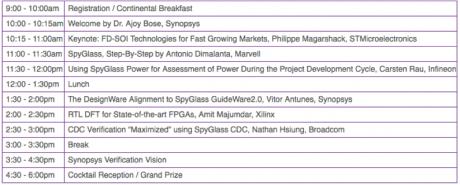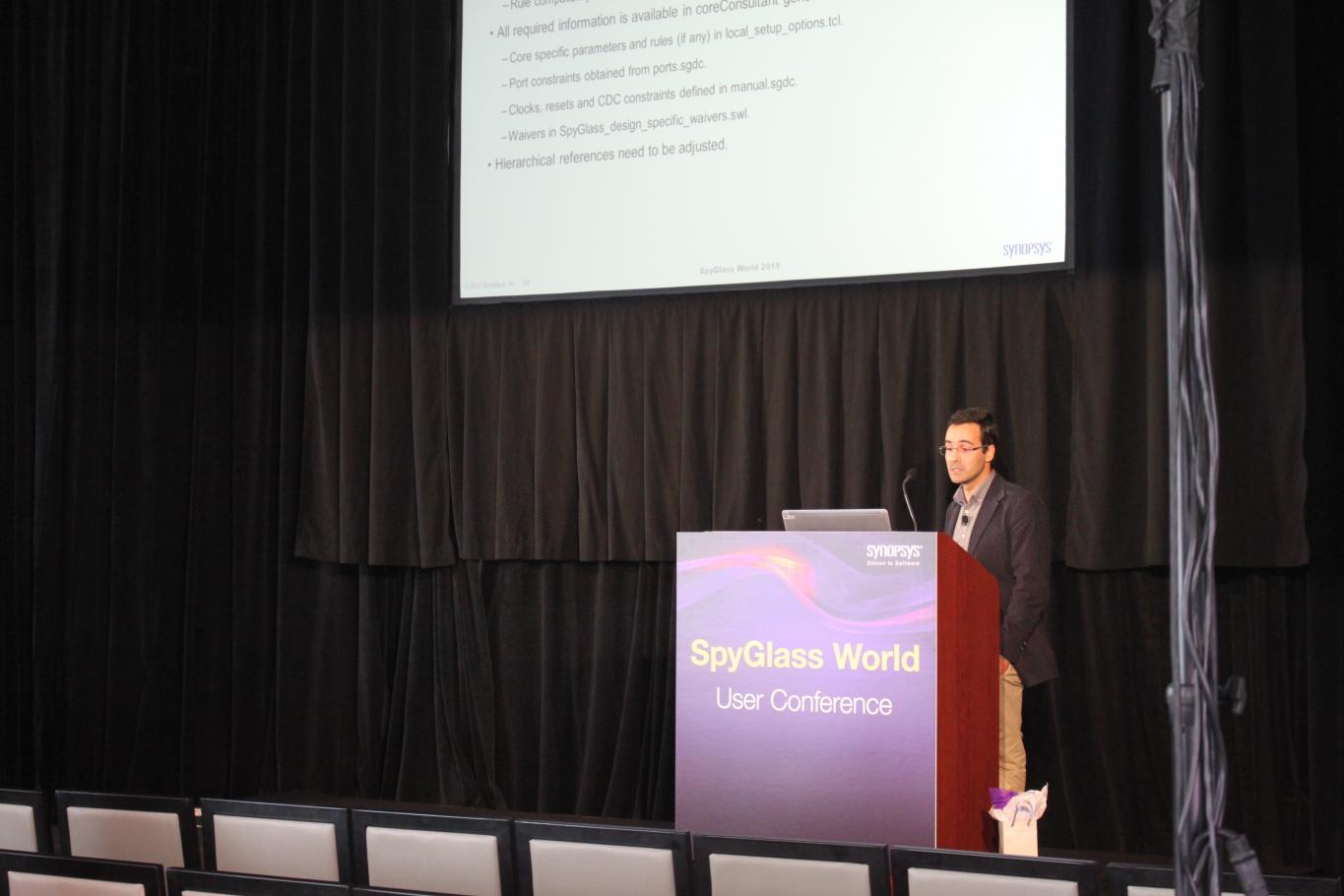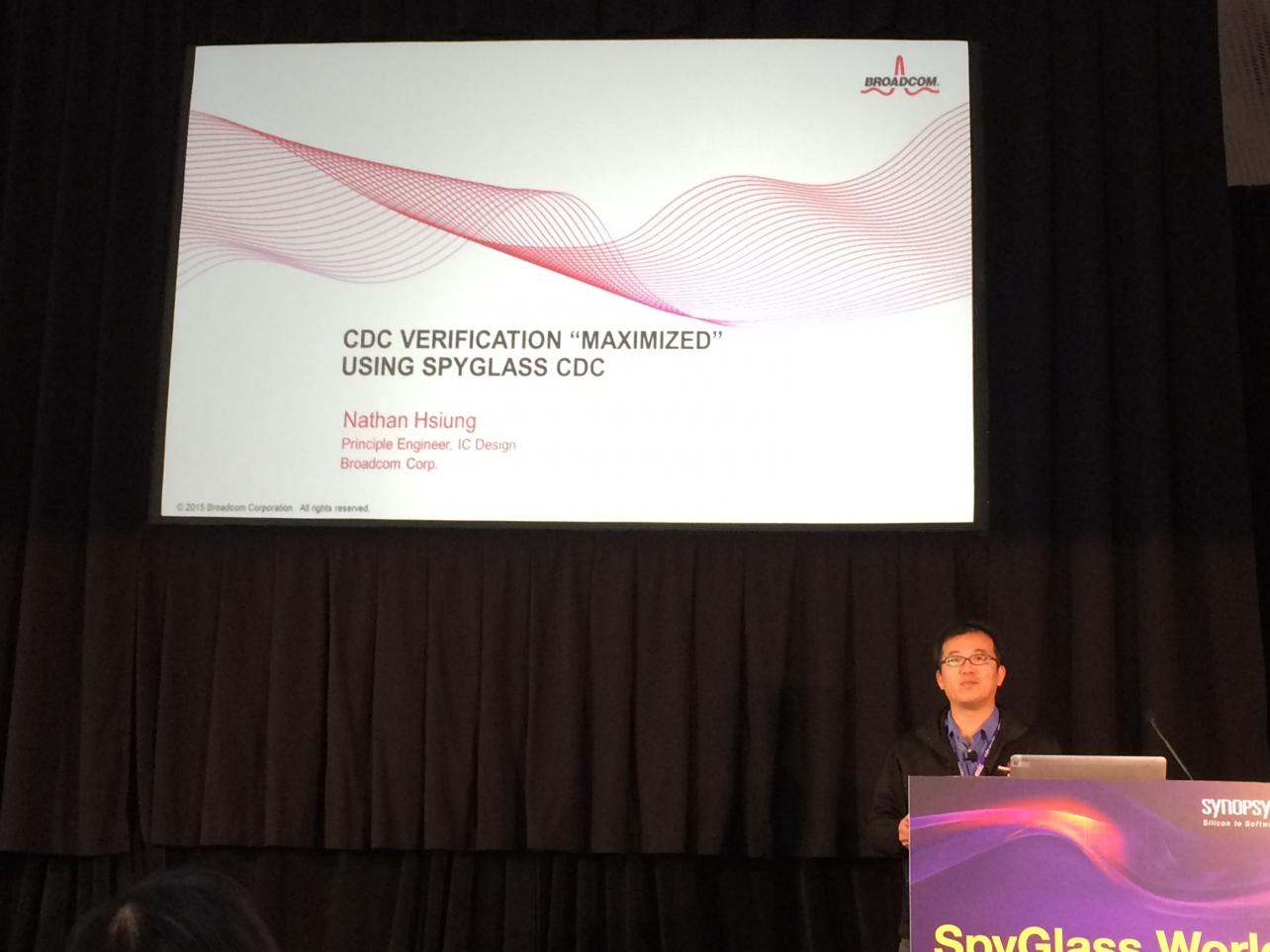I attended SpyGlass World this week – to give you an update, to catch up with old friends, including users, and to meet some of the new (to me) players from the Synopsys side of the event.  The event was held in the United Club at Levi stadium, just like last year. Don’t know if this will continue. Merging the SpyGlass User Group into SNUG would be logical, also attendance wasn’t as strong as last year, perhaps because no-one expected significant news such a short time after the merger. The marketing guys confirmed it was indeed to soon to share well-developed merger plans.
The event was held in the United Club at Levi stadium, just like last year. Don’t know if this will continue. Merging the SpyGlass User Group into SNUG would be logical, also attendance wasn’t as strong as last year, perhaps because no-one expected significant news such a short time after the merger. The marketing guys confirmed it was indeed to soon to share well-developed merger plans.  I’ll spare you a blow-by-blow for the event and will focus just on a few presentations that captured my interest. The detailed schedule is here. As always, it’s a lot more useful to learn about tool usage from real users than from a product company and each of the presenters delivered.
I’ll spare you a blow-by-blow for the event and will focus just on a few presentations that captured my interest. The detailed schedule is here. As always, it’s a lot more useful to learn about tool usage from real users than from a product company and each of the presenters delivered. Philippe Magarshack, CTO of ST, gave an enlightening keynote on IoT and FD-SOI. Some highlights:
Philippe Magarshack, CTO of ST, gave an enlightening keynote on IoT and FD-SOI. Some highlights:
- For an IoT example, he mentioned a UK telematics-based insurance company called “Drive like a Girl”. You plug a device into your car which tracks your driving habits. The company uses that information to adjust your insurance rates. Not a new idea but interesting for the company name!
- Claims FD-SOI has better reliability to soft-error rates (radiation-induced errors) than FinFET. This is interesting not just for obvious applications like satellites but also in cars which demand higher reliability standards that found in consumer electronics. The claim is that FinFETs have to compensate with logic triplication (with higher area, cost and power) which is not necessary with FD-SOI.
- To help jumpstart the nascent IoT market, ST is incubating startups in Grenoble; this also helps ST tune their products to real applications. An example is sevenhugs, an application which monitors sleep habits and adjusts temperature and humidity to improve sleep.
 Vitor Antunes from the (Synopsys) DesignWare group gave a presentation on the group’s use of SpyGlass:
Vitor Antunes from the (Synopsys) DesignWare group gave a presentation on the group’s use of SpyGlass:
- Has been used for internal quality checking since 2012
- Became the default choice for DW customer validation of configured cores, through coreConsultant, since 2014
- Today run CDC and Lint, but plan to extend this to other Guideware checks over time
- The DW group aims to stick close to the SpyGlass GuideWare 2.0 ruleset. This should be a hint to end-users still custom-blending their own SpyGlass rulesets that the need to be different is looking increasingly difficult to defend.
 Nathan Hsiung from Broadcom explained their use in validating CDC correctness in large networking chips. What I found especially interesting was their use of the hierarchical CDC flow. Designers generally do everything they can to avoid hierarchical verification flows anywhere – in CDC, timing, you name it. Nathan offered several reasons for why they went hierarchical.
Nathan Hsiung from Broadcom explained their use in validating CDC correctness in large networking chips. What I found especially interesting was their use of the hierarchical CDC flow. Designers generally do everything they can to avoid hierarchical verification flows anywhere – in CDC, timing, you name it. Nathan offered several reasons for why they went hierarchical.
- They had no choice. They build huge networking chips – many 100’s of millions of gates. Flat CDC analysis on designs this size would take too long to complete.
- Hierarchical approaches allow running top-level CDC verification many more times
- Analysis is much simpler when you follow a bottom-up flow. If you run everything flat, you are deluged with warnings and errors with no obvious place to start debug. If you clean-up bottom-up, each stage of debug is manageable.
- They checked carefully that abstracted models used in higher-level runs do not make unreasonable assumptions, which gives them high confidence that those higher-level runs are not masking potential problems.
Finally, Michael Sanie from Synopsys presented the Synopsys Verification vision. This is worthy of a separate blog, so I won’t detail it here. You can learn more abut the SpyGlass products, now on the Synopsys website, HERE.
Share this post via:






Comments
There are no comments yet.
You must register or log in to view/post comments.